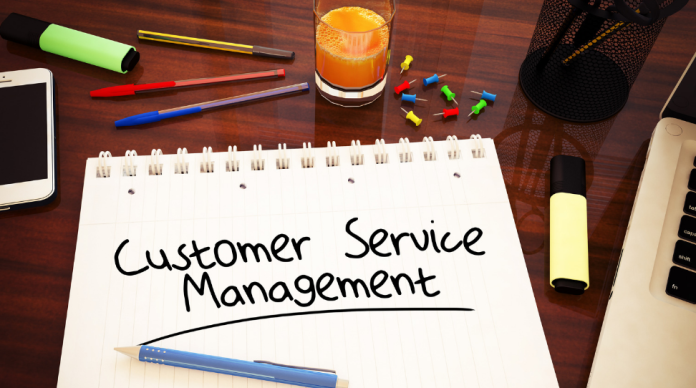Table of Contents
Customer service is no longer a phenomenon restricted to a single department. It has grown to a company-wide strategy. According to Glance, companies require twelve positive customer experiences to compensate for one unfavourable experience. And this brings us to the gamut of customer communication.
A quick run-through into Customer Communication Management (CCM)
Customer communication management is an outbound business strategy for communicating with customers. In many cases, CCM is via a tool or software that localises conversations to a central location. And this then helps the other functions such as marketing, sales and services to leverage customer engagement. Note that outbound communications are of two forms. It can either happen through live interaction such as phone calls or in-person conversations or via digital avenues such as the written mediums of emails and chats.
According to Hubspot, 62 per cent of customers prefer email communications, 48 per cent phone calls, and 42 per cent chat. Lastly, about 42 per cent of them fill Contact Us forms.
3 Things to look for in a CCM provider
1. Listening to customers

The numero uno aspect is listening to customers. According to McKinsey, approximately 70 percent of the customer journey is based on their perception of treatment. As per Hubspot, 90 per cent of customers consider an immediate response a top priority. And 60 per cent of them regard a waiting time of ten minutes or less as a defining metric.
Given this, listening to your customers is crucial. Most often, they tend to be vocal about their expectations. If the company is not listening, it is likely to lose out on that customer.
Let’s take the example of a user named Macy. She stands loyal to her insurance provider for quite some time. But, now no longer receives any communications by postage. Instead, she receives emails, which go unchecked. In this situation, the customer prefers physical communications such as bills or invoices sent through postal mail.
With the right customer communications management software, end-users can receive communications in their preferred format and timeframes. By listening to and acknowledging your customers, you can make them feel valued and respected.
Additionally, remember to cater towards personalising your renderings. No customer likes to be a mere number on a long list of clients. They want to feel that companies care about them, and hence, customer communications management is crucial. So, if a customer prefers communications in a specific language or they’re vernacular, it is in your best interests to offer it. And this is across the board, including emails, bills, and text messages shall all be in that language.
2. Customise Customer Offers

Customers want communications to feel personal, and companies are expected to go the extra mile. Corporations today are expected to anticipate customer needs and render befitting business suggestions. It is this personalisation that shall make them regular and frequent customers.
In this stead, automation and analytics are the standing pillars. Take the example of Miley. She recently purchased a jacket and gloves from a retail company. A few weeks later, the retailer launched its new winter footwear. The company sends Miley an email providing a peek into the top products. And the best part? The email comprises the footwear that best matches the coat she has purchased. Seeing this, Miley checks upon the attractive options to replenish her wardrobe. So she buys boots.
Thus, it is important to look at the customer journey when rendering customer communications. Doing so helps you provide better, personalised services. Along with a CCM, companies should also use customer journey mapping software that records customer interaction with the company platform.
Customer journey mapping software provides valuable insights going ahead. The varied data points enable companies to amp up their services, personalise their offerings, and tend to customer needs. Their reports include fluctuations in engagement levels, purchase recurrence rates and primary pain points in the journey. These, essentially, are deal-breakers where the clients tend to lose interest.
3. Ensuring the Flow of Communications

Customers today expect companies to provide them with the options of how and when luxury brands should communicate with them. They expect avenues such as sending invoices, language preferences, and timeframes. What’s more, the same experience should feature across the varied channels or interaction avenues.
When offering an omnichannel communications approach, customers should be able to switch from websites to applications and calls seamlessly.
Let’s take the example of a customer named Mark. He received an email intimation from the electric provider about a better pricing offer for the current consumption rate. That is, the communications pertained to a service upgrade. So he got curious and went ahead by clicking the link mentioned in the email. Before making the switch, he desired some more information. So he decided to contact the provider via call.
The operator attended to his call and jotted down the relevant details. The representative knew, in an instant, that Mark had received the offer and now qualified for a different package. The call centre representative took to putting forth the benefits of the upgrade. Now, Mark has a better electricity service and remains a loyal customer.
Long story short, omnichannel communication systems foster connections between the company and customers at any given time. What’s more, the data from these channels are synchronised. In that, companies save time on following through other departments. Whatever be the journey of the conversation, customer data stand updated.
At the end of the day
The importance of communication is key. Customer Communication Management systems help with high-volume interactivity. In doing so, they also ensure top-notch compliance and minimal errors. In this way, corporations can enhance their ROIs by offering enhanced customer experiences. Another aspect that a CCM helps is the automated distribution of voluminous customer documents. Lastly, real-time mobile and web experiences foster content filled with interactive charts and sliders. In all, CCM is the holy grail for customer communications.


